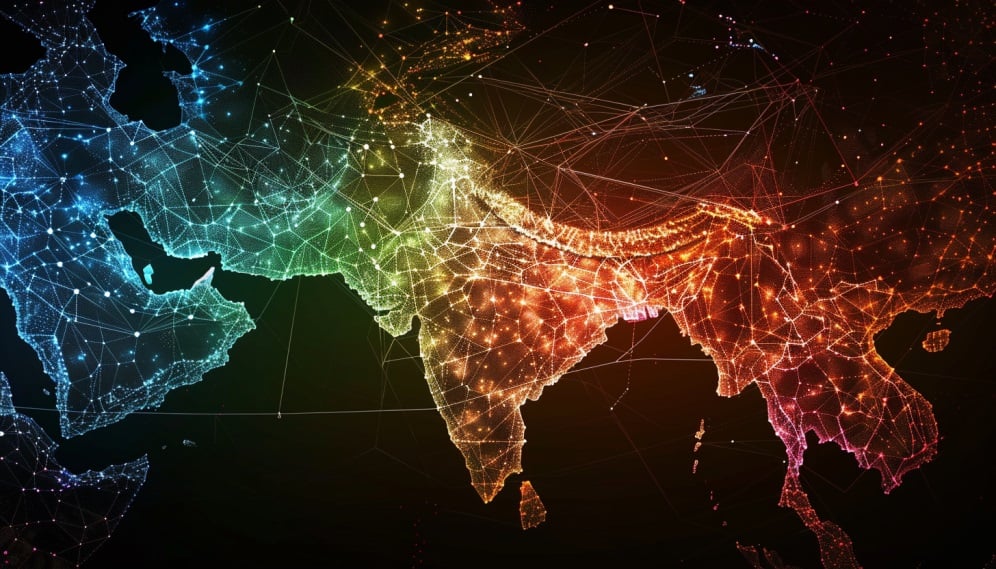Infra
India’s top 3 telcos hike plan prices to boost network infrastructure

- 5G monetization finally kicks off in India with Jio and Airtel increasing entry-level rates for 5G services
- India was previously able to support low mobile pricing thanks to rapid and massive subscriber growth
- The price hikes may lead to SIM consolidation and impact digital and financial inclusion
India’s top three telcos, Reliance Jio, Bharti Airtel and Vodafone Idea, have hiked the prices for their mobile plans from 10 to 15% after more than two years.
While earlier unlimited 5G services were available from Reliance Jio and Bharti Airtel, this is no longer the case.
Jio and Airtel have increased entry-level pricing for customers keen to avail 5G services. A Jio mobile user will need to pay a base price of INR349 ($4.17) for a 2GB per day pack instead of an INR239 ($2.86) base pack offering 1.5GB per day. Meanwhile, Airtel 5G users will need to pay INR409 ($4.89) for 2.5GB per day instead of the old INR239 ($2.86) plan offering 1.5GB per day.
Vodafone Idea, which has yet to launch 5G services, has increased its pricing by 10 to 23%, starting July 4. Vodafone Idea needed a tariff hike much more than other players because of its massive debt, which delayed network expansion and led to significant subscriber loss over the last two years. It recently came up with a Follow-on Public Offer (FPO) to generate funds for network upgrades and to launch 5G services.
According to media reports, these price increases will lead to a massive jump of around INR475 billion ($5.68 billion) annually in consumer spending on telecom services. This will lead to a significant increase in average revenue per user (ARPU) for all three telcos. Airtel has the highest ARPU of INR209 ($2.50) followed by Jio’s ARPU of INR181.7 ($2.17) and Vodafone Idea’s INR146 ($1.74) at the end of March 2024.
“Airtel has maintained that the mobile average revenue per user (ARPU) needs to be upwards of INR 300, to enable a financially healthy business model for telcos in India,” Airtel said in a press release. “We believe that this level of ARPU will enable the substantial investments required in network technology and spectrum and offer a modest return on capital.”
The need for a price hike
Telcos have hiked tariffs after more than two years and it was crucial for them to increase their ARPU to invest in new technologies and improve customer experience. Over the last two years, the telcos have invested heavily in acquiring 5G spectrum and deploying networks. Even so, there hasn’t been any monetization because they were offering unlimited 5G services at 4G tariffs.
But why is this move so significant?
Historically, India has had some of the lowest mobile pricing. This was mainly because the telcos were focusing on subscriber growth and not so much on boosting ARPU. The economies of scale ensured that they remained profitable even when ARPUs were extremely low. In addition, stiff competition and Jio’s strategy of offering services at rock-bottom rates forced other telcos to bring down voice and data rates.
This seems to be changing as the market evolves and the focus shifts to customer experience. Providing basic connectivity is no longer enough, and the telcos need to focus on the quality of services to prevent churn. For this, they need to continuously invest in network upgrades and modernization, which is possible only with a high ARPU.
The tariff hike is also required to support future growth as the telcos look to expanding network in rural areas as well as in growing revenue from new services.
Low tariffs in India have played a crucial role in boosting digital and financial inclusion, and the recent hike may impact this. It may also lead to SIM consolidation, as many users own more than one SIM, and now, with the increase in tariffs, they may let go of secondary SIMs.
Because of this, Jio has not hiked the rates of Jio 4G feature phones, and Airtel has increased the entry-level packages by less than 70 paise per day. While the tariffs continue to be low in India, the telcos have finally got pricing power back.










